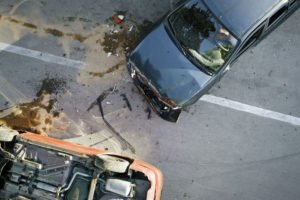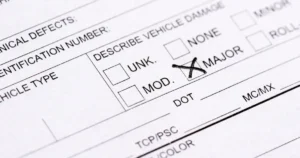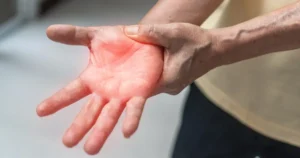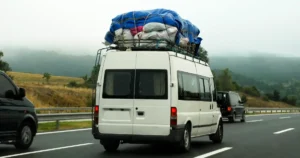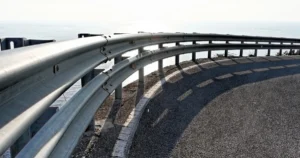 Crossover accidents occur when vehicles leave their designated lanes and cross into oncoming traffic, often resulting in catastrophic head-on collisions on Indiana highways. These crashes can cause severe injuries or fatalities due to the combined force of vehicles traveling in opposite directions.
Crossover accidents occur when vehicles leave their designated lanes and cross into oncoming traffic, often resulting in catastrophic head-on collisions on Indiana highways. These crashes can cause severe injuries or fatalities due to the combined force of vehicles traveling in opposite directions.
At Pfeifer Morgan & Stesiak, our experienced South Bend injury attorneys have successfully represented numerous injured victims throughout Indiana. Our dedicated legal team understands the impact these accidents have on victims and their families. We fight to secure the maximum compensation you deserve for your injuries. There are no upfront costs or fees when we fight for your justice.
Call our firm at (574) 444-0741 today to get started
What Exactly Is a Crossover Crash on Indiana Highways?
A crossover crash occurs when a vehicle veers across the median or centerline, enters the opposing lane of traffic, and collides with oncoming vehicles. These accidents typically happen on divided highways when a driver loses control, crosses the median strip or barrier, and enters lanes carrying traffic moving in the opposite direction.
Crossover accidents are particularly dangerous because they often result in head-on or side-impact collisions at highway speeds. The Indiana Department of Transportation has installed cable barriers and concrete dividers on many highways specifically to prevent these catastrophic crashes.
Who May Be Liable for Damages From a South Bend Crossover Crash?
Determining liability in South Bend crossover crashes involves identifying all parties whose negligence contributed to the accident.
Negligent Drivers
The driver who crossed the median may be liable if their actions resulted from distracted driving, impaired driving, excessive speeding, or falling asleep at the wheel. Indiana’s comparative fault laws allow injured victims to pursue compensation from drivers who cause these crashes due to negligent driving.
Vehicle Manufacturers
If a mechanical failure occurs, such as:
- Brake malfunction
- Steering system defect
- Tire blowout
Caused the driver to lose control and cross the median, the vehicle manufacturer may be partially liable. Product liability claims require proving that the defect existed when the vehicle left the manufacturer and directly contributed to the accident.
Government Entities Responsible for Road Maintenance
State or local government agencies may share liability if inadequate median barriers, poor road design, or lack of proper maintenance contributed to the crossover crash. These entities have a duty to design and maintain reasonably safe roadways, including installing appropriate barriers on high-risk highway sections.
Construction Companies
Road construction companies working on Indiana highways must properly mark construction zones and maintain safe driving conditions. When distracting signage, improper lane closures, or other construction-related hazards contribute to a crossover accident, the construction company may bear responsibility for resulting injuries and damages.
Evidence That Supports an Indiana Crossover Accident Case
Building a strong crossover accident case requires collecting specific evidence demonstrating how and why the vehicle crossed the median or centerline. Here are pieces of evidence that can support your claim after a crossover collision:
- Accident Scene Photographs: Showing vehicle positions, skid marks across the median, and damage to barriers
- Police Reports: That document lane departures and median crossings
- Dashcam Footage or Traffic Camera Recordings: Capturing the moment the at-fault vehicle crossed into oncoming traffic
- Median Barrier Exam Reports: That could reveal inadequate design or maintenance issues
- Vehicle Black Box Data: Providing proof of speeding, braking patterns, and steering inputs before crossing the centerline
- Cell Phone Records: Showing the driver was distracted at the time of crossing the median
- Road Design Documents: That prove the width or barrier of the median is inadequate
- Weather Reports: Documenting hazardous conditions that contributed to the loss of control
- Witness Statements: Describing the crossing vehicle’s erratic movements before the collision
- Expert Accident Reconstruction: Explaining the physics of the crossover event
What Driver Errors Increase the Risk of South Bend Crossover Accidents?
Dangerous driving behaviors significantly increase the likelihood of a vehicle crossing the median and causing a crossover collision. The following driver errors are frequently identified as primary contributors to these highway accidents:
- Distracted Driving: Texting or using mobile devices, causing unintentional drift across centerlines
- Driving While Fatigued: Falling asleep at the wheel, leading to gradually sliding out of the lane
- Operating Vehicles Under the Influence: Of alcohol or drugs, impairing judgment and lane-keeping ability
- Excessive Speeding: Making recovery from minor steering errors nearly impossible
- Aggressive Driving Maneuvers: Including unsafe lane changes that can cause a loss of control
- Overreacting to Road Hazards: By jerking the steering wheel or slamming on the brakes
- Failing to Adjust for Weather: Like ice, snow, or heavy rain that reduce traction and visibility
- Improper Vehicle Loading: Causing instability during turns or emergency maneuvers
- Following Too Closely: Requiring sudden evasive actions that may lead to median crossings
- Driving Unfamiliar Vehicles: Without adjusting to different handling characteristics
Which South Bend Roads and Interstates Are Prone to Crossover Accidents?
South Bend and the surrounding areas have several high-risk roadways where crossover accidents occur with concerning frequency due to specific design features, traffic patterns, and environmental factors. The following roads and highways in the South Bend region have historically demonstrated higher rates of median crossover crashes:
- Interstate 80/90 (Indiana Toll Road): Features long, straight stretches where driver fatigue and high speeds contribute to vehicles crossing the median
- S. Route 31: Particularly dangerous at bypass sections where there is frequent traffic between opposing lanes
- McKinley Avenue: Experiences frequent centerline crossings at curves and during adverse weather conditions
- Cleveland Road: Has several sections with inadequate separation between oncoming traffic lanes
- State Road 23: Higher crossover risks at intersections and during heavy commuter traffic periods
- Portage Avenue: Shows increased crossover incidents where the road narrows and curves simultaneously
- Lincoln Way East/West: Contains multiple segments where drivers frequently drift across centerlines during nighttime hours
How Northern Indiana’s Unique Weather Patterns Contribute to Crossover Crashes
Northern Indiana’s location along Lake Michigan creates a weather phenomenon known as the “lake effect,” which intensifies heavy snowfall and road slickness, significantly increasing crossover accident risks.
The region also experiences extreme temperature changes that accelerate road surface deterioration. This creates unexpected potholes and dips in pavement that can cause drivers to lose control and veer across medians.
Indiana’s Laws for Highway Median Barriers and How They Help Prevent Crossover Crashes
Indiana has comprehensive highway median barrier regulations designed to reduce the frequency and severity of crossover accidents on high-speed roadways throughout the state. These safety standards have changed based on increased traffic volume, accident data, and engineering advances to protect motorists from highway collisions.
Cable Barrier Systems on Indiana Highways
The Indiana Department of Transportation has installed high-tension cable barriers along highway segments with histories of crossover crashes. These flexible systems can absorb tremendous impact energy, catching vehicles before they cross into opposing lanes while causing less damage to occupants than rigid barriers. INDOT prioritizes installation on highways with medians between 31 and 50 feet wide, where crossover risks are statistically highest.
Concrete Median Barriers Requirements
These solid structures provide maximum protection against heavy vehicle crossovers in high-traffic corridors like portions of I-65 and I-69 near urban centers. While less forgiving upon impact than cable systems, concrete barriers provide superior protection against larger vehicles and eliminate the possibility of center median penetration.
Guardrail Installation Standards
Indiana’s highway safety code requires metal guardrails at specific locations where terrain has increased crossover risks, such as curves with steep embankments. These systems must meet federal crash testing standards and be installed at heights and distances from travel lanes to effectively redirect vehicles back onto the roadway. Recent updates to state standards have increased the required guardrail height in crossover-prone areas.
Barrier Maintenance Responsibilities
State law assigns clear responsibility to INDOT and county highway departments for regular inspection and repair of all median barriers. These regulations require the replacement of damaged cable barriers, concrete sections, and guardrails that require prompt repairs. This maintenance schedule is legally enforceable, potentially creating liability for government entities if neglected barriers fail to prevent a crossover crash.
Have Recent Infrastructure Improvements Reduced Crossover Risks on I-80/90 and US-31?
Cable median barriers have successfully reduced crossover risks by roughly 90 percent. In Indiana, the Department of Transportation has placed over 550 miles of cable barrier systems on interstates and divided highways. Under INDOT’s “US 31 Free-Flow” program, begun in 2020:
- Four additional interchanges
- Two railroad overpasses
- Four reduced conflict intersections
are slated for completion by 2024, with the corridor entirely free of traffic signals and at-grade rail crossings by 2026.
What Catastrophic Injuries Commonly Result From High-Speed Crossover Collisions?
Crossover accidents frequently result in severe injuries due to the combined force of vehicles traveling in opposite directions. The following injuries commonly occur in high-speed crossover crashes and often require extensive medical treatment, rehabilitation, and lifetime care:
- Traumatic Brain Injuries: Ranging from concussions to severe brain damage, causing permanent cognitive impairment
- Spinal Cord Damage: Often resulting in partial or complete paralysis when violent impact fractures or severs the spinal cord
- Multiple Compound Fractures: Particularly to lower extremities as vehicle fronts collapse into passenger compartments
- Internal Organ Damage: Causing life-threatening hemorrhaging from the liver, spleen, and other vital organs during sudden deceleration
- Chest Trauma: Including flail chest, pulmonary contusions, and aortic tears from steering wheel and dashboard impacts
- Facial Disfigurement: Requiring multiple reconstructive surgeries from windshield and flying debris impacts
- Traumatic Amputations: When extremities are caught in crushed metal or severed during the violent collision
- Severe Burns: From post-crash fires that frequently occur when fuel systems rupture during high-speed impacts
- Psychological Trauma: Including PTSD, driving anxiety, and depression following the extraordinarily terrifying nature of head-on collisions
- Fatal Injuries: Accounting for a disproportionately high percentage of highway fatalities compared to other accident types
How South Bend Police and Indiana State Troopers Investigate Crossover Crashes
South Bend Police and Indiana State Troopers use specialized crash reconstruction protocols to investigate crossover accidents. They begin by securing the scene and documenting all physical evidence before it degrades. Investigators photograph skid marks, debris patterns across the median, and vehicle rest positions.
The investigation team then downloads electronic data from vehicle Event Data Recorders (EDRs), which can provide critical pre-crash information like speed, brake application, and steering inputs in the seconds before the median was crossed. This approach allows investigators to determine not just which vehicle crossed the median, but why it occurred. This also provides critical information for both criminal proceedings and subsequent civil litigation.
What Drivers Can Do to Reduce the Risk of a Crossover Crash in South Bend.
Every driver traveling on South Bend highways can act to dramatically reduce their risk of being involved in a crossover accident. The following preventative measures are particularly effective at keeping your vehicle in the proper lane and avoiding the consequences of crossing into oncoming traffic:
- Eliminate All Distractions: Put phones out of reach while driving to prevent the lane drift
- Maintain Proper Vehicle Maintenance: Regularly inspect tires, brakes, and steering components to prevent mechanical failures that can send vehicles across medians
- Install Lane Departure Warning Systems: Consider vehicles equipped with technology that alerts drivers when unintentionally drifting toward centerlines
- Take Regular Breaks During Long Trips: Stop every two hours on long journeys to combat fatigue-related lane departures
- Reduce Speed During Adverse Weather: Slow down during snow, ice, or heavy rain conditions common in Northern Indiana
- Allow Extra Following Distance: Maintain at least a three-second gap to avoid sudden evasive maneuvers that can result in loss of control
- Avoid Driving Under the Influence: Never drive after consuming alcohol or medications that cause drowsiness or impaired judgment
- Use Extra Caution on High-Risk Roads: Be particularly aware of the road when traveling on I-80/90, US-31, and other crossover-prone highways
- Practice Proper Steering Techniques: Use smooth, predictable movements rather than jerking the wheel when avoiding obstacles
- Plan Trips During Daylight Hours: When possible, avoid nighttime driving when visibility challenges increase crossover risks
Why Victims Injured in a Crossover Crash Should Seek Legal Help
Crossover accident victims face challenges in securing fair compensation due to complex liability issues, injuries, and extensive financial losses these crashes typically involve. Insurance companies often deploy teams to minimize payouts in these high-value cases, using tactics like early settlement offers that fail to account for lifetime care needs or disputing fault despite clear evidence.
Pfeifer Morgan & Stesiak’s attorneys possess the knowledge needed to reconstruct crossover crashes and identify all responsible parties. Our legal team works directly with accident reconstruction specialists, medical experts, and economists to build compelling cases, allowing injured victims to focus on their recovery rather than battling insurance companies.
Injured in a Cross-Over Accident? Contact a Trusted Pfeifer Morgan & Stesiak Car Accident Lawyer Today
At Pfeifer Morgan & Stesiak, we handle every aspect of your crossover accident case while you focus on recovery. Our proven track record of securing favorable settlements and verdicts for accident victims speaks to our dedication.
Do not wait to seek legal help after a crossover accident. Contact our South Bend office today for a free consultation or complete our online form to have an attorney evaluate your case and reach out to you.
Experienced Lawyers. Proven Results. Call:(574) 444-0741 today.

